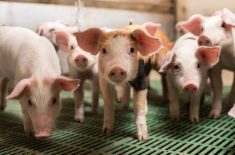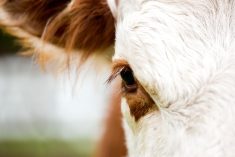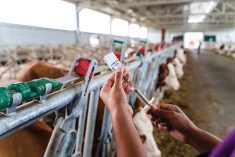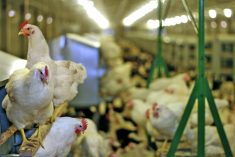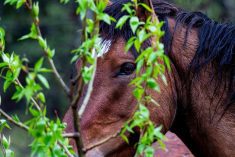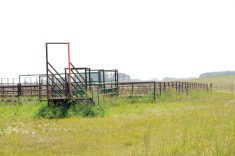The newly created Western Canadian Swine Health Intelligence Network will help keep producers informed about swine disease monitoring and disease knowledge transfer in Alberta, Saskatchewan and Manitoba.
“This is a wonderful system. It keeps people informed about what’s going on in the industry. We’re encouraging all vets to participate,” said Dr. Egan Brockhoff, a swine veterinarian and partner at Prairie Swine Health Services.
He advised producers to ask their veterinarians to participate in the network.
“Engage with your vet to find out what is going on and have your vet continue to communicate with you,” he said during a recent Alberta Pork telephone town hall.
The recently created network complements the activities of both the Ontario and Quebec swine health networks and the Canadian Swine Health Intelligence network. The goal is to protect western Canadian pig herds from new and emerging disease while informing people about diseases that are endemic in the country.
Read Also

Mid-June rain a ‘godsend’ but forage growers manage expectations
Although chunks of Alberta got some major rainfall the weekend of July 21-22, the jury’s still out on whether it will make a difference to what has so far been a mediocre year for hay.
As part of the network, participating swine vets in Western Canada fill out data surveys every time they visit a farm, said Brockhoff.
“These are very general surveys,” he said. “They respond to questions about which kind of diseases they have treated. They don’t give out information specifically about the farms they have gone to and they don’t share the location. It’s simply about the observations they see in their lives as a swine vet.”
The information is fed into a database maintained by Manitoba Pork and reviewed by a veterinarian working on behalf of the three Prairie pork boards.
Vets can also report quarterly on findings from their practice and lab results, which are compiled into a western Canadian survey.
Veterinarians representing each province also take part in swine specialist conference calls.
“The information is then fed back into the industry to create intelligence and knowledge about the state of pig health,” said Brockhoff. “It’s a good way to keep our fingers on the pulse of the health of pigs in Western Canada.”
An app is being developed so vets can put information into the system while they’re on the go.
“I would encourage all pork producers to reach out to their vets and say, ‘We think this is a good idea and it helps protect the health and integrity of our western Canadian herd, and ultimately our Canadian herd, so let’s get involved,’” he said.





